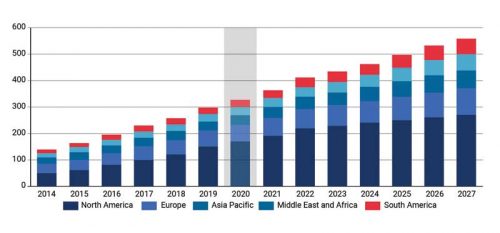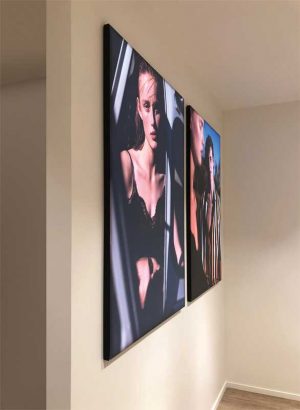
The global lightbox market will continue to grow at a very steady pace per a recent report by Cognitive Market Research (June 2020) led by the North American marketplace.
Is that brand speaking to me?
Visual cues is the new language for consumers. The right amount of light in a retail format can make almost anything stand out. The beauty, colour, scheme, detail, and quality of a product will shine through a lot more with correctly backlit signage. The right amount of light and shadow highlights texture and works to elicit emotion from the viewer.
Further, using lightboxes to illuminate a message guarantees consistent visibility. This makes it a lot easier for customers to see and to engage with the product. Clear, concise messaging that separates a brand from the pack is a winning proposition.
Different types of illumination can fit any environment to drive ambience and messaging. The primary types of illumination to consider include:
• Back lit—ideal for most signage applications due to image clarity and no glare, as well high visibility in direct sunlight;
• Large format—stand out with huge seamless messaging to show strength of the brand; and
• Dynamic lighting—add dynamic light-emitting diodes (LEDs) to signage to add movement and turn heads with low cost and versatility.
Thanks to new advancements in technology, lightboxes no longer have to be thicker; they come with all the benefits of existing lightboxes and are more design friendly. New profiles allow for maximum light output in fabric frames as low as 15.8 mm (0.625 in.) thick. Custom-made (built to spec), short build times, no minimums, and North American made have changed the lightbox landscape.
Crystal-clear message
Today, hot and dark spots are a thing of the past when the appropriate light engine is applied as even light distribution across the whole message can be guaranteed. What is key here is an overall lighting strategy that most retailers will not give much thought, including what are the backlit signage objectives and what defines success? These pieces need to be defined to map the store environment in alignment with its customer base.
Zumtobel Group, a supplier of integral lighting solutions for professional indoor and outdoor building lighting applications, claims a fashion retailer in Germany saw its sales go up by approximately 12 per cent compared to another local store, after it installed a new lighting scheme specially designed to appeal to the personality profile of its target customers.

Thanks to new advancements in technology, lightboxes no longer have to be thicker; they come with all the benefits of existing lightboxes and are more design friendly.
“The strategic use of quality illuminated graphics and environmental lighting has a proven impact on a positive shopping experience, purchase behaviour and brand loyalty,” says Andrew Pierce, the CEO of
MINT Collaborative.
Steve Goertz, president of Visual Impact, adds: “As our customers create immersive and entertaining environments, they are relying on grand-format lit dye sublimation to make big statements economically inside the lease line, as window treatments, even as ceiling treatments. The ability to economically update these large graphics to match an ongoing digital campaign calendar makes it budget friendly to maintain continuity of messaging.”
The global lightbox market will continue to grow at a very steady pace per a recent report by Cognitive Market Research (June 2020) led by the North American marketplace.
With the North American market leading the way post-pandemic, retailers would be best served by working with companies that:
• Manufacture in North America for best in class;
• Provide custom-made products that are built to spec;
• Provide rapid turnaround times; and
• Provide ‘no minimum’ build requirements.
These pieces are paramount for successful lightbox deployments and long-term partnerships.
The use of lightboxes is also good for a company’s green footprint. They use far less power yet provide superior illumination. Better illumination provides clear and concise messaging driving better lift at retail. Many have heard the term ‘retail is detail,’ and the detail here is understanding how lighting plays such an important role in customer choice.





